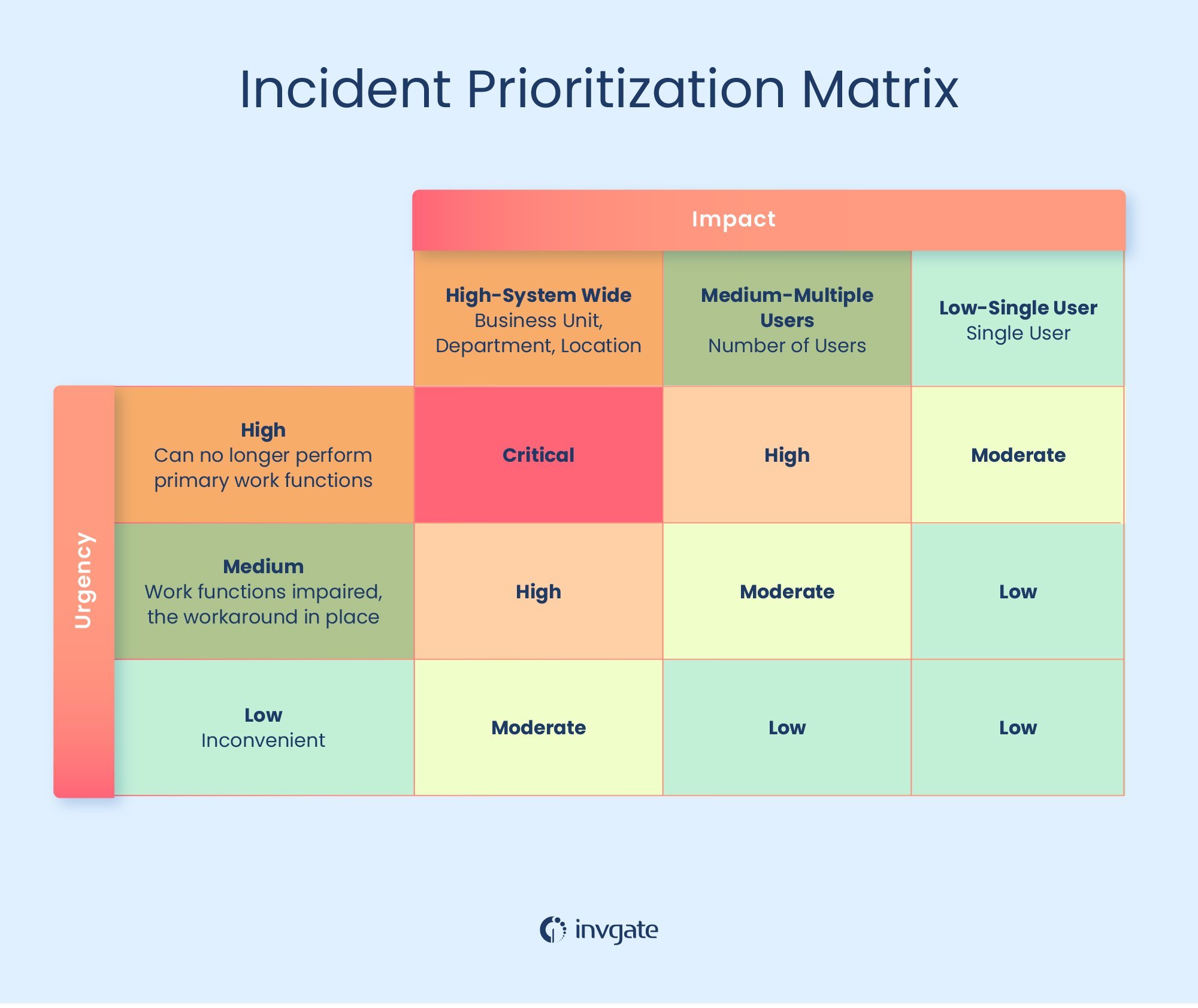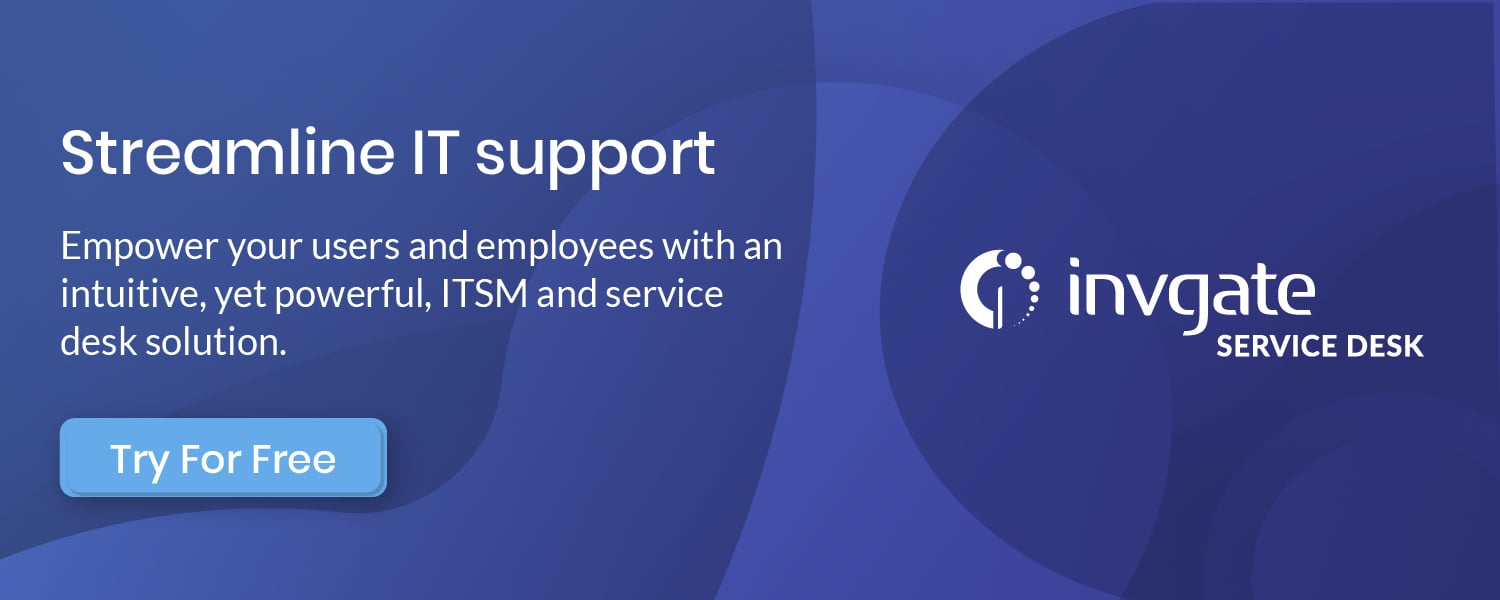The ITIL priority matrix can be valuable in assigning and directing work in an IT Service Management (ITSM) environment. Following on from our guide to all things ITIL, it can help you understand what is causing the most pain to your end-users, and direct your support efforts accordingly.
Done well, an ITIL priority matrix can decrease service downtime, improve customer and employee experience, and make the request and change processes more efficient. But in order for you to apply it correctly, we created this complete guide with the basics, its pros and cons, best practices, and its impact on the service desk.
Ready to get excited about priority matrices? Let’s begin.

What is a priority matrix?
The ability to prioritize incidents, requests, and changes is vital for IT and business needs. Thus, in its simplest form, the priority matrix defines the importance of an incident for the service desk analyst so that they know how quickly it needs to be acted on and enable them to set an expectation with the customer on potential resolution timings.
The ITIL matrix balances the impact and urgency of the customer contact so that it can be assigned, communicated, and resolved appropriately.
When to use a priority matrix?
This ITIL methodology is typically used (and it should be applied to) to prioritize incident requests, problems, and change activity in a practical, consistent, and fair way. We’ll take a closer look at this later on.
How does the ITIL priority matrix work?
When dealing with priority matrices, the first thing you need to be familiar with is their terms. They organize incidents, requests, problems, and change based on two factors:
- Impact is generally the severity of the fault, for example, how much downtime or how many end users are affected.
- Urgency is how quickly the fault needs to be resolved.
So, for instance, if you have an incident where a service is down, and people need to use it immediately versus a system where it’s down, but no one is planning to use it until the following day, the first incident has greater urgency.
Most ITSM tools have a priority matrix embedded in their process workflows, so assigning a priority is included in the incident or request logging process. Most practitioners use a scale of 1 to 5, whereby 1 is a critical or major incident, and 5 is a minor request or a "nice to have."

Pros and cons of using an ITIL priority matrix
When designing any ITSM practice, you need to ponder the pros and cons of using this methodology to route work. Some advantages of using a priority matrix are:
- Higher service availability levels because critical incidents (and the resources needed to resolve them) will be addressed first.
- Clarity around what incidents and requests should be dealt with first, making sure that everyone is dealt with fairly. Transparency is crucial from an end-user perspective and can help manage expectations.
- The ability for service desk analysts to break down complex issues and assign an overall priority.
- Empowering support teams to objectively and unambiguously rank priorities.
- Identify and communicate the most crucial areas of focus.
- Greater transparency between IT and the business.
However, everything has a downside. The potential disadvantages of using an ITIL matrix could include:
- Depending on your organization, there may be circumstances whereby a priority matrix might not be the best possible choice, for example, when dealing with VIP customers.
- If the matrix is too rigid, you may miss opportunities for improving customer and/or employee experience.
7 best practices when using a priority matrix
When introducing an ITIL priority matrix, the following best practices can help you do it effectively:
- Create the right culture - Set the scene with your support teams, and explain how the priority matrix works in your organization.
- Practice makes perfect - Have a pilot or trial using it beforehand to iron out any glitches.
- Create guidance for using it and have it signposted in your service desk portal or intranet.
- Embed it in your tool so that analysts can quickly and easily assign the priority without having to switch screens.
- Keep your terminology consistent even across different ITSM practices.
- Review and improve over time.
- Include your suppliers in your matrix decisions to avoid issues during the fix activity - We all see things differently, and what might be a high priority to your company might be of low priority in the eyes of a third-party supplier. Bottom line? Make sure you agree on priority levels and that this is referenced in any contracts or support agreements.

The service desk and the priority matrix
An effective priority matrix can help you up your game across your service ecosystem. Here are some examples of real-life best practices.
Incident Priority Matrix
Incident management is all about speed, so it makes sense that incident prioritization is a vital part of the process.
A typical ITIL incident priority matrix will look like the following:

As you can see, there are three levels of impact and three levels of urgency, and combining them gives five potential priority scores, which will help triage incidents effectively. Incident management priorities should be linked to service levels so that the most critical incidents are resolved first, and support for this is codified in a service level agreement (SLA).
Some examples of SLA requirements based on priority include the following:
- Priority 1 - Respond within 10 minutes, resolve within 4 hours.
- Priority 2 - Respond within 15 minutes, resolve within 8 hours.
- Priority 3 - Respond within 1 hour, resolve within two working days.
- Priority 4 - Respond within 4 hours, resolve within five working days
- Priority 5 - Respond within one day, resolve within ten working days
Problem Priority Matrix
Problem management is all about root cause analysis. It is the practice of identifying the primal cause of one or more incidents and fixing them, either through the workaround route or by implementing a permanent resolution.
Thus, the primary input to problem management will be incidents and major incidents, so the problem management priority matrix should be the same as what is already in place for incident management. Sometimes this will mean prioritizing problems not to be solved, for example, if an effective workaround is already in place or a permanent fix is too expensive.
Request Priority Matrix
Request management is all about fulfilling service requests. It’s less pressurized than incident or problem management as nothing is broken or on fire, but it is the process that links users to new technology, which is a key enabler.
Incident and request management are two sides of the same coin; incident management removes blockers in the form of incidents, and request management drives the business forward with new tools and services, and thus the ITIL request priority matrix should reflect this.
Change Priority Matrix
Change management (or enablement if you’ve embraced ITIL 4) is the practice of delivering IT change effectively, efficiently, and safely. Change is the practice that looks at potential change activity, ensuring that activity is in the business's best interests and then planning and scheduling accordingly.
With this in mind, the priority matrix can be adapted for change management so that approvers can assess the impact and urgency of the change in the same way service desk technicians use it to triage incidents or order equipment to make approval and scheduling decisions.
Final thoughts
Using an ITIL priority matrix can help you to improve your incident, request, problem, and change practices by enabling technicians to cut through the noise and focus on business needs.
If you’re considering its adoption, make sure to consider the following:
- Your priority matrix should be used across all your practices so they have a consistent look and feel.
- Socialize the use of priority matrices and make sure everyone is trained on how to use them.
- Priority matrices are not a silver bullet, so give some thought to where they are not appropriate (for example, when handling requests from senior management).
Frequently Asked Questions
How to create a priority matrix?
Start with your service desk and incident management practices. Create a simple matrix based on impact and urgency and build from there.
How to use a priority matrix?
Build it into your tool, train everyone, and communicate it to end users, so everyone knows what to expect.
What are priorities in ITIL?
ITIL uses the priority model to determine the importance of incidents, problems, changes, and service requests. Priority is based on impact and urgency.
What are the different priority levels?
Most practitioners use a scale of 1 to 5, whereby one is critical, and 5 is a minor request.
How do you prioritize incidents in ITIL?
Use a matrix to handle all tickets consistently, effectively, and fairly.
Why is the priority matrix important?
The priority matrix is important because it helps service desk analysts and support teams to triage work effectively in line with business needs.















.jpg?upsize=true&upscale=true&width=780&height=205&name=ITIL%20Foundation%20Exam%20(2).jpg)
